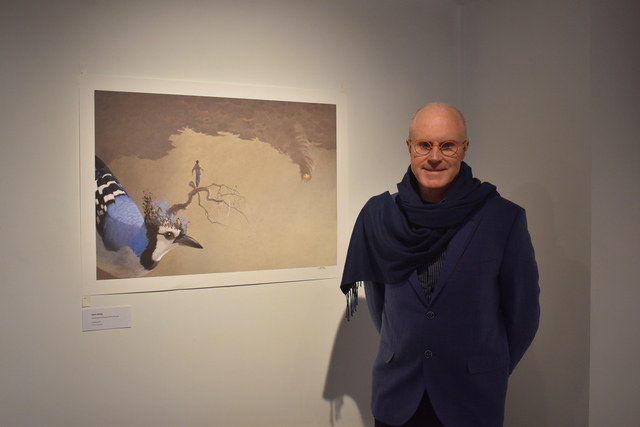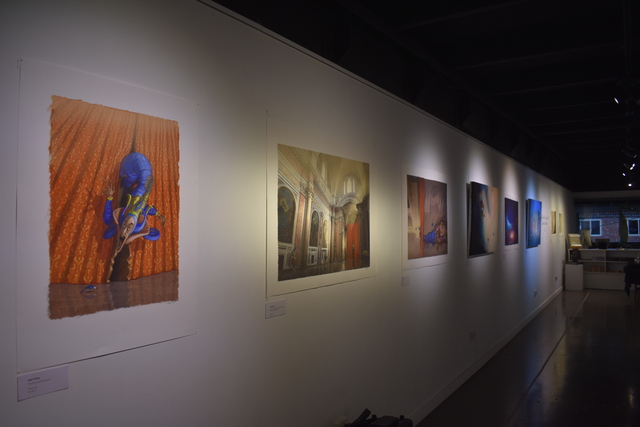The latest exhibition at YAVA offers visitors a multi-modal insight into the world of someone suffering from mental illness.
The exhibition is a selection of works from a combined film, orchestral composition and illustrated book project ‘The Tree of Ecstasy and Unbearable Sadness’ by artist Matt Ottley, who has suffered from type 1 bipolar disorder since childhood.
Mr Ottley said it’s a visceral but safe experience of what a psychotic episode is like.
“It’s to engender a little more empathy into the conversation and complex mental illness, David’s [curator David Miller] chosen a number of works that cover those main points throughout the narrative that focus on the different stages of a psychotic episode,” he said.
“Perhaps it will give people a little more of an empathetic understanding of what it is like for someone who suffers an illness like type 1 bipolar disorder or schizophrenia and perhaps some small insight into the fractured reality that people with those conditions experience.”
The YAVA exhibition contains about a third of the works in the book. The book is intended to be read in conjunction with the film and orchestral composition as part of Mr Ottley’s intermodal initiatives ‘The Sound of Picture Books’.
Mr Ottley said the composition is an accordion symphony written by him and the works are a combination of oil paintings and digital works of which he has worked over the top of with acrylic paint, pencil and ink.
“The digital process is extraordinary these days, you can choose which oil paints or pencils or whatever you want and achieve an amazing result. But there is still something that’s not quite organic about that process, I really wanted that sense of the human touch over the top of the digital work,” he said.
“I use a painter called Corel Pantone and I don’t use any features that involve automation, if you can’t draw and you can’t paint you probably can’t use a program like that, but the AI space for most visual artists is fairly worrying,”
“I don’t know what to think of it to be honest but unless someone builds a machine that can actually hold a paintbrush or a pencil, it won’t be able to achieve that organic human touch that comes from the inaccuracies of a human hand holding a pen or a paintbrush.”
The exhibition will be on display in the YAVA Gallery until Sunday 14 July.
Mr Ottley said it’s not politics, it’s not sport, and it’s not religion that changes social values and engineers the kind of future directions of society; it’s the arts.
“Someone like Gandhi is a good example, the levels of understanding of exactly who he was and his role in Indian politics was kind of little understood in the Western world until a Ben Kingsley movie came out three decades ago now, and suddenly Gandhi as a person was much more understood in the Western world,” he said.
“That’s a classic example of an artwork highlighting and educating and doing so from an aesthetic and an emotional perspective, and that’s why the arts are so powerful because they are about reaching into one’s emotions through aesthetics, and that’s a far more powerful way to engender social values and to educate people.”








